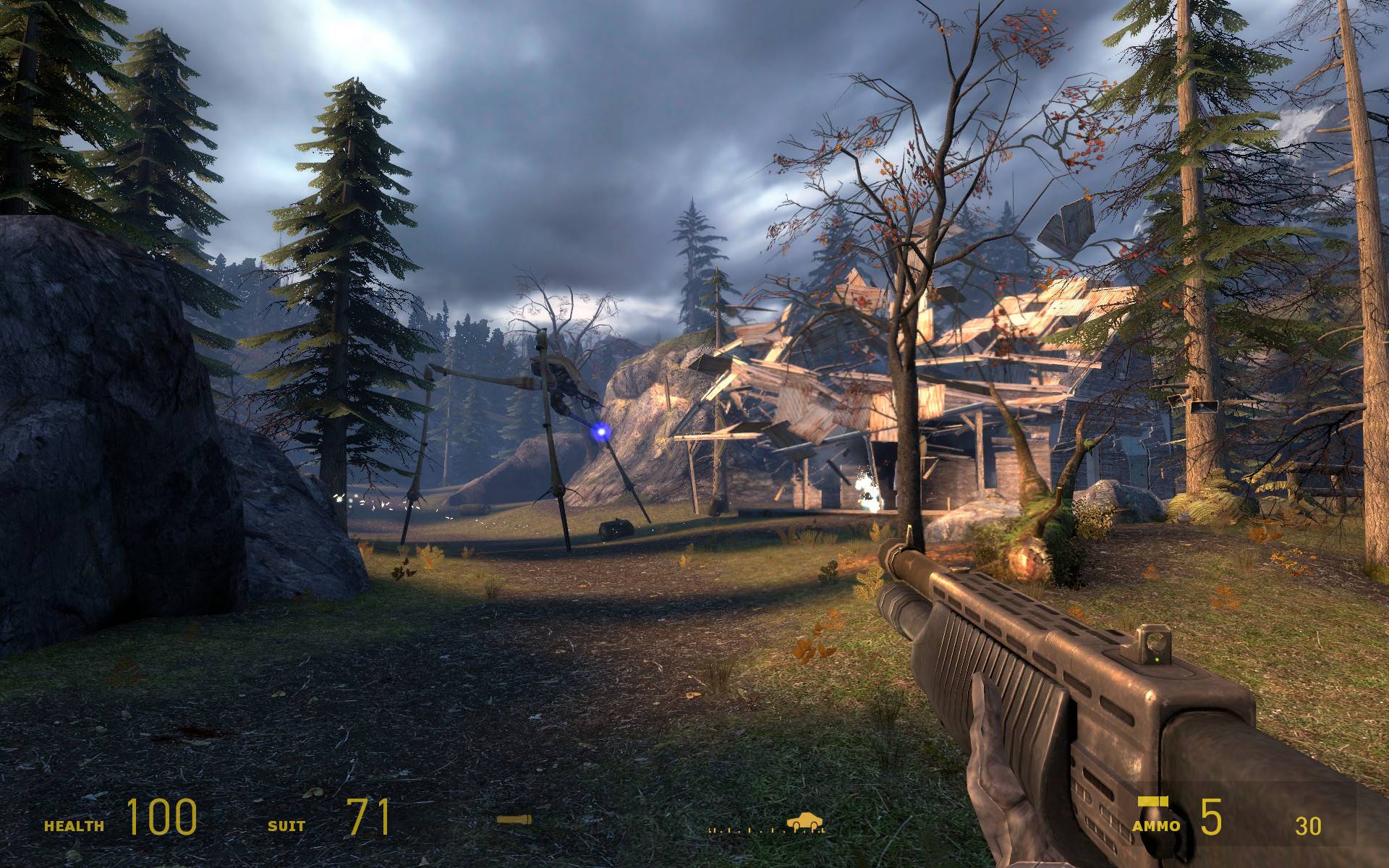Engines are a big deal in the industry. The strength of an engine has a massive impact on the way a game can work and the kinds of things it can achieve. In a sense, games themselves are limited by the power of the engines they are built in, and this extends well beyond visual fidelity. Certain engines can allow for more complicated AI, or interactive elements not possible in other engines. Half Life 2 was built in the Source engine, and incorporated a physics engine called Havok to manage its environmental physics simulations. For its time, this provided a much more realistic approach to the way the elements of the game world interacted with one another. This allowed for physics puzzles and whole sections of the game driven by these systems. Source also implemented a complex facial-animation system to portray characters more realistically than had ever been achieved before, thus adding to the overall immersion of the game and no doubt helping it claim its place amongst video-games most effective storytelling experiences. This, along with the overall improvement in the visuals of the game, show how engines are massively important in the development and limits of a project.
 |
| Half Life 2 |
So, what engines are on offer today? Well Source is still kicking about, and the first-person shooter Titanfall is using it, or at least a modified version of it. The engine powering the most games at the moment is Epic Games' Unreal Development Kit, built on Unreal Engine 3. The success of this engine is down primarily to its friendly user interface (something that source is in dire need of) as well as its adaptability. UDK can be used to develop games for all kinds of platforms, from current to next gen and all the way down to mobile devices. Another is Cryengine 3, an engine which is arguably more advanced than UDK and offers a wonderful dynamic lighting solution (something which both Source and UDK have difficulty implementing, but is slowly becoming a staple of the console/PC games market) With that said, there is a reason that few developers choose to use Cryengine 3 over UDK, and it comes down to the aforementioned adaptability. Also it has to be considered that a license for cryengine can be much more expensive than one for UDK (which is aimed at both triple A studios and indie developers alike).
http://techgage.com/articles/graphic_cards/settings/oct_2008/half_life_2_episode_two.jpg
http://www.eurogamer.net/articles/digitalfoundry-2014-titanfall-tech-interview
http://www.crytek.com/blog/exclusive-interview-chris-roberts-building-a-new-future-with-cryengine-3
http://news.bigdownload.com/2009/11/10/interview-prometheus-designer-chats-about-latest-udk-based-game/

No comments:
Post a Comment